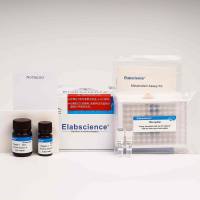Verifying and Quantifying Helicobacter pylori Infection Status of Research Mice
互联网
520
Mice used to model helicobacter gastritis should be screened by PCR prior to experimental dosing to confirm the absence of enterohepatic Helicobacter species (EHS) that colonize the cecum and colon of mice. Natural infections with EHS are common and impact of concurrent EHS infection on Helicobacter pylori -induced gastric pathology has been demonstrated.
PCR of DNA isolated from gastric tissue is the most sensitive and efficient technique to confirm the H. pylori infection status of research mice after experimental dosing. To determine the level of colonization, quantitative PCR to estimate the equivalent colony-forming units of H. pylori per μg of mouse DNA is less labor-intensive than limiting dilution culture methods. Culture recovery of H. pylori is a less sensitive technique due to its fastidious in vitro culture requirements; however, recovery of viable organisms confirms persistent colonization and allows for further molecular characterization of wild-type or mutant H. pylori strains. ELISA is useful to confirm PCR and culture results and to correlate pro- and anti-inflammatory host immune responses with lesion severity and cytokine gene or protein expression. Histologic assessment with a silver stain has a role in identifying gastric bacteria with spiral morphology consistent with H. pylori but is a relatively insensitive technique and lacks specificity. A variety of spiral bacteria colonizing the lower bowel of mice can be observed in the stomach, particularly if gastric atrophy develops, and these species are not morphologically distinct at the level of light microscopy either in the stomach or lower bowel. Other less commonly used techniques to localize H. pylori in tissues include immunohistochemistry using labeled polyclonal antisera or in situ hybridization for H. pylori rRNA. In this chapter, we will summarize strategies to allow initiation of experiments with helicobacter-free mice and then focus on PCR and ELISA techniques to verify and quantify H. pylori infection of research mice.









